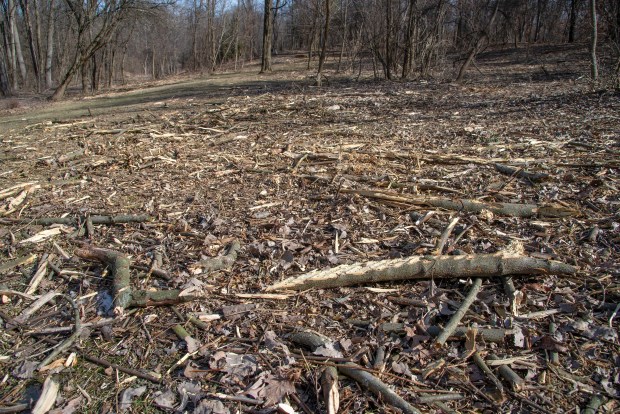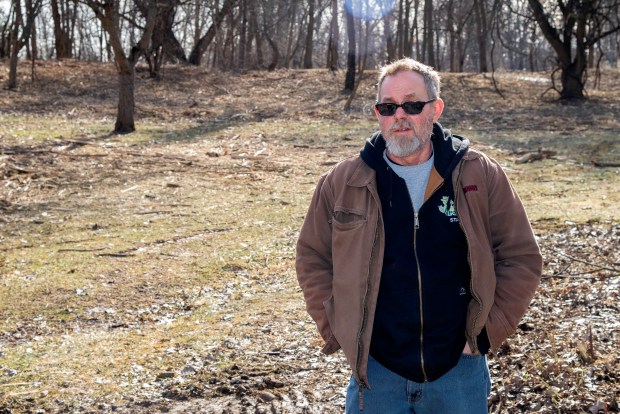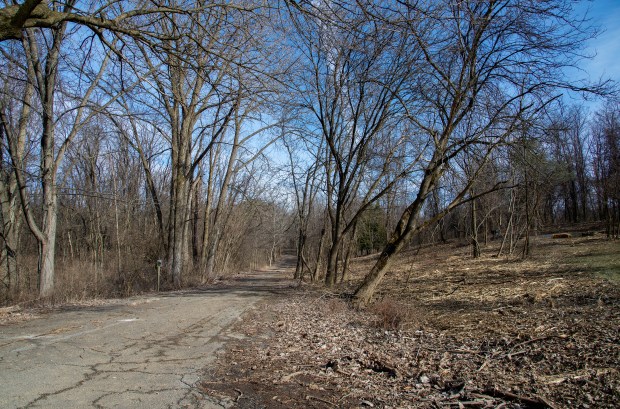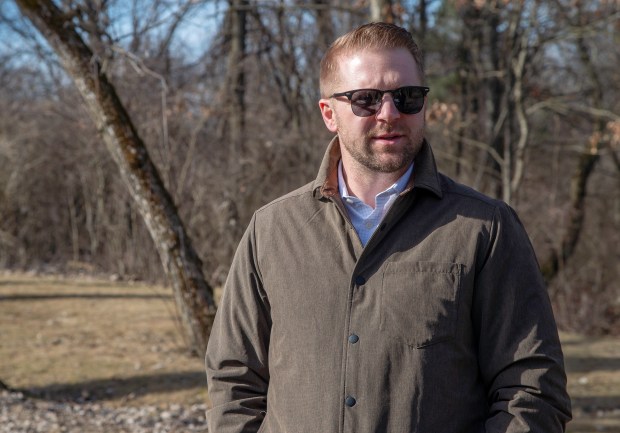Biologists from the U.S. Fish and Wildlife Service are riding large, heavy-duty mowers through Rogers Lakewood Park on Valparaiso’s north side to remove invasive plant species.
The mowers can chew up trees up to eight or 10 inches in diameter.
The park, closed for safety reasons during the project, is expected to reopen Thursday.
“This is the largest weeding project,” Horticulture Superintendent Steve Martinson said.
“They’ve got forestry mowers, and they’re mowing all of the invasive species in the park,” Valpo Parks Director Kevin Nuppnau said. “Anything that shouldn’t be here, they’re chewing it up and mowing it down.”
It’s a boon to the Valpo Parks system, which has been aggressively trying to eradicate invasive species.
“They reached out to us and asked if we wanted to participate in the program,” Nuppnau said. It was an offer he couldn’t refuse.
Hiring the work out would have cost perhaps $40,000 for the four days of work, Martinson said.
Walking through the former Derby Downs area of the park, where the Soap Box Derby used to run, the difference their work is making is clear.
People who play disc golf will notice the difference and probably lose fewer of their flying discs, Nuppnau said.

“We’ll see a lot more visibility through the approaches,” he said. “If you came through here a couple days ago, you couldn’t see” because it was so overgrown. “There’s the old skate park there. You couldn’t see that from here.”
“The park has continued to get overgrown, and so for lack of a better term the bad stuff, the invasive stuff, comes in and squeezes out the native plants,” he said. By clearing out the undergrowth, the plants that the park staff wants to blossom can have a chance to do so.
“We’re going to find out how much of a seed bank is stored up in there,” Martinson said.
Autumn olives, ornamental trees and Asian honeysuckles are being destroyed to give the native trees – like oaks, cedars and walnuts – a chance to thrive.

“This is the time to do it because the migratory birds aren’t here right now,” Martinson said.
It’s also a time when the park sees fewer visitors. For most people, it’s just too darn cold to spend a lot of time walking through the park.
“By closing the park down, they don’t have to worry about people walking around and getting in the way,’ Nuppnau said.
The park is large, about 122 acres. Nuppnau hopes one-quarter to one-third of the park will have the USFWS biologists’ attention before they pack up and head to their next project.

Once they’re gone, the park staff will have homework to do, spraying herbicides, removing stumps and trying to make sure the invasive species don’t grow back. “We have to make sure this wasn’t all for nothing,” Nuppnau said.
“This is almost like a passion project for us,” Assistant Horticulture Superintendent Paul Chen said. “It almost brings a tear to my eyes.”
Some trees might need to be planted, Martinson said. Saplings from the Indiana Department of Natural Resources tree nursery can help, along with larger trees that can be purchased and transplanted.
“I’m old enough to have seen this place before it became a weed farm,” Martinson said.
Valpo Parks staff are working at Valplayso now to remove invasive species by hand, Martinson said.
It might seem like a never-ending battle. “Certainly, the borders of our parks have started to encroach on things,” Nuppnau said. Invasive species from neighboring properties creep back into the park.
“We push it back to the perimeter and hope for the best,” Martinson said. He hopes that by the parks staff’s example, the neighbors will begin clearing out the invaders on their own properties.
“People need to see correctness,” Martinson said. “We don’t plant invasive species plants. We try to delete invasive species plants.”
That wasn’t always the case.
“I’ve been aware of it since 2002,” he said. “I realize now I made a lot of mistakes back in the ‘80s.”
That’s back when the DNR tree nursery distributed a lot of autumn olives and black locusts, Martinson said.
Valparaiso and Porter County have ordinances against planting ornamental pears, but they’re not enforced heavily, allowing developers to plant them in new subdivisions, he said. Some states outlaw them entirely.
Even as Martinson talked about the project, he spotted mulberry trees that will need to be cut down to restore the health of the native forest. The work doesn’t stop.
Doug Ross is a freelance reporter for the Post-Tribune.




